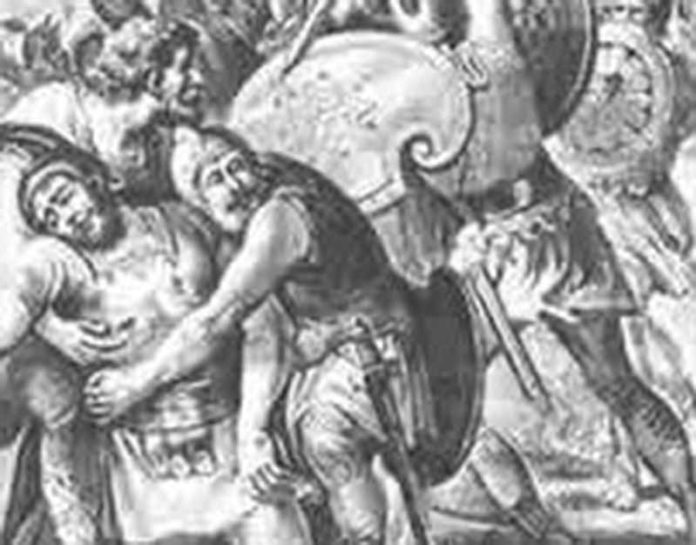While many students of American history are probably familiar with the story of John Brown and his attempt to gain support for a slave uprising at Harper’s Fairy, Virginia, most people are not aware of the fact that revolts in the face of slavery are certainly nothing new.
Consider, the year 73 B.C.
Rome, still considered a Republic had just begun to stretch out its imperial fingers toward the rest of the world, and it wouldn’t be long before the Roman Empire would rise (Julius Caesar would first take up the throne of Emperor only 24 years later). Slavery was and always had been a well-defined institution of the Roman republic. Slaves were either purchased from slave traders or gathered up as spoils of war from cities and nations captured by the Romans.
Needless to say, unlike much of the slavery we are familiar with in modern history, ancient slavery often had very little to do with race or ethnic dominance (though surely there were hints of this as well). It was simply a way of life for people of all cultures and skin colors.
During this same period (as well as later periods) the sport of Gladiator combat was also very popular throughout the Republic. Of course the gladiators were generally slaves themselves, forced to fight to the death for no other reason than the amusement of the population at large.
As is the nature of humanity, very few of the slaves in Rome were particularly fond of their situation. It was a pot of oil ready to boil over, and in 73 B.C. the time was apparently ripe.
The Gladiator War
The rebellion began when 70 gladiators escaped from a combat training school in Capua (using, as the story goes, kitchen utensils as weapons). These 70 gladiators escaped from bondage, and began to release as many others as possible (for without an army, there would be no hope of escaping the Roman world). The gladiator/slaves chose for themselves leaders, including the now-famous Spartacus.
The gladiators defeated the forces sent from Capua to stop them, traveling and gathering up larger forces in the form of slaves as they moved throughout Italy. The Roman senate refused to take the rebellion seriously, however (after all, they were only 70 men to start with), though they sent a man named Gaius Claudius Glaber with a force of three thousand men known as a praetorian guard to defeat the rebels, who had now entrenched themselves at Mount Vesuvius (a year had passed since the initial escape by this point).
The gladiators and slaves, against all odds, thoroughly defeated Glaber’s 3000 men, and what had been merely a rather insignificant rebellion suddenly turned into an all-out war – today known as the Servile War, in reference to the fact that many of the combatants were slaves (actually, it is technically considered to be the Third Servile War, as two other such rebellions had broken out in the past, though these others had been much more minor, and both taking place on the island of Sicily, not directly threatening to the Italian Peninsula).
The Roman government, enraged at the defeat of their forces, swiftly sent more and more men to attack the gladiators and slaves, though they continued to be defeated by the continually swelling army. As more slaves and lesser men of Rome heard about the rebellion, they flocked to join up, eventually growing to a number which has been estimated at around 70,000 fighting men.
Rome Fights Back
It is here that the slave forces divided – some of them heading north under Spartacus toward freedom outside the Roman Republic, while some of them remained behind under the gladiator Crixus, who, overconfident in the victories so far attained over the Roman armies, decided to stay and plunder the homeland a while longer. This turned out to be quite a mistake, for as Spartacus continued northward, battling his way successfully toward freedom, Crixus was easily defeated by the now very serious Roman army, which was rather tired of this not-so-little rebellion.
As Spartacus headed toward the Alps in the north, his army continued to grow until it had reached nearly 120,000 men. Just as the army of slaves seemed on the verge of victory – an escape over the Alps and out of Roman territory, an overconfident Sparticus inexplicably turned his army around and headed back toward Rome, perhaps to take the city itself, or perhaps for some other reason – this is information we have not been blessed with. Nevertheless, it was this decision which would be the rebellion’s undoing.
Leading the charge against the slaves was one M. Lucinius Crassus, in command of the Roman armies. So greatly did he desire the defeat of Spartacus that he subjected his armies to what is known as decimation, where after any failure one in every ten men in the army was ordered beaten to death by his fellow soldiers. It was probably a very effective, though brutal, way to get the best out of his men.
Finally, in 71 B.C. the entire army of Spartacus finally met the entire army of Rome for the first time in a single battle near Brundisium. By this point the great Roman general Pompey had returned to Italy from leading his armies to victory elsewhere and had taken control of the situation. The battle was fierce, and for the first time, Rome was victorious. Spartacus’ pride, apparently, had been his undoing.
The body of Spartacus was never found after this battle, but one assumes he must have died and been buried en masse with the rest of his army. Six thousand surviving slaves were then taken and crucified along the roads of Rome as a reminder to the rest of the republic that insurrection was rather frowned upon, and would be dealt with severely.
Sources:
- Plutarch. “Life of Pompey.” c. A.D. 75.
- Plutarch. “Life of Crassus.” c. A.D. 75
- Fast, Howard. “Spartacus.” 2000








